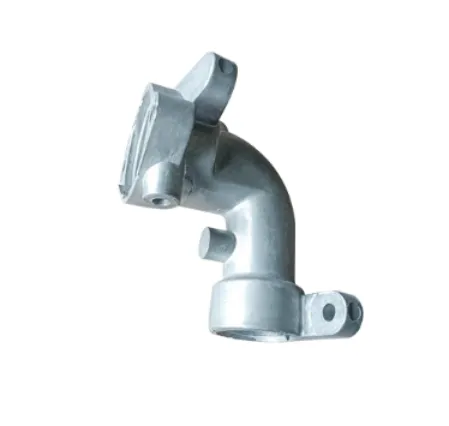Mobile:+86-311-808-126-83
Email:info@ydcastings.com
Performance Cooling with Advanced Automobile Water Pump Solutions
In the modern automotive industry, engine cooling systems play a pivotal role in both efficiency and longevity. At the heart of this system lies the automobile water pump, responsible for circulating coolant through the engine block and radiator. As vehicles evolve toward higher performance and tighter emission standards, the design and function of the automobile water pump have likewise advanced—especially with the increasing adoption of electric pump technologies and optimized engine manifolds.
Traditional vs. Modern Automobile Water Pump Designs
A conventional automobile water pump is mechanically driven by a belt connected to the crankshaft. It operates in sync with engine speed, meaning it runs faster as RPMs increase. While reliable, this system offers limited control and can draw unnecessary power under low-load conditions.
In contrast, modern variants are engineered for improved energy efficiency, variable flow control, and compatibility with hybrid and electric platforms. Material selection has also improved, with aluminum alloys and polymer composites replacing heavy cast metals. These enhancements reduce parasitic losses and help automakers meet fuel economy targets without compromising cooling performance.
The Function and Role of Engine Manifolds in Thermal Management
Though not directly responsible for fluid transfer, engine manifolds are critical to thermal dynamics and airflow regulation. The exhaust manifold, in particular, handles extreme temperatures and must be designed to resist warping, cracking, and heat saturation. Poor manifold design or casting defects can lead to hot spots, which place additional stress on the automobile water pump and overall cooling loop.
High-quality engine manifolds contribute to more even temperature distribution, reducing the thermal load on other components and enabling more stable engine performance. In performance vehicles, the manifold is often paired with integrated coolant jackets or thermal coatings to further aid in temperature control.
When properly engineered, the synergy between engine manifolds and the cooling system results in a balanced environment that protects the engine under a wide range of driving conditions.
Efficiency Gains with an Automotive Electric Water Pump
The automotive electric water pump represents a significant leap in vehicle cooling technology. Unlike traditional pumps, it operates independently of engine speed, allowing coolant to circulate even when the engine is off—a crucial feature for modern start-stop systems and turbocharged engines.
Controlled via the vehicle’s ECU, an automotive electric water pump adjusts flow rates based on real-time engine load, ambient temperature, and operational needs. This targeted approach reduces unnecessary energy consumption and provides immediate cooling after hard driving or shutdown.
From a manufacturing standpoint, these pumps are compact, lightweight, and often simpler to install. Their digital control also improves diagnostic precision, giving mechanics more visibility into system behavior and potential faults.
Features That Define a Quality Auto Electric Water Pump
Choosing the right auto electric water pump involves more than just electrical compatibility. The pump must feature a high-efficiency impeller, corrosion-resistant seals, and robust motor construction capable of long service life.
Thermal performance is also a key metric. A superior auto electric water pump will operate quietly across temperature ranges, avoid cavitation, and withstand rapid changes in load. Many models today come with integrated sensors for coolant temperature and pump speed, enabling seamless communication with advanced engine management systems.
Durability testing—including salt spray, vibration, and life cycle simulation—ensures that these pumps can handle the demanding environments of daily commuting, long-distance driving, and aggressive performance use.
Integrating the Automobile Water Pump into Modern Engine Platforms
With engines becoming smaller, more powerful, and densely packed, integration of components like the automobile water pump is more important than ever. Space efficiency, routing clarity, and maintenance accessibility all influence design decisions in vehicle assembly.
OEMs and Tier 1 suppliers now treat the automobile water pump as a critical element within the broader cooling and emissions system. Paired with sensors, engine manifolds, and thermostats, the pump must fit within complex engine bays while delivering consistent, smart cooling performance.
Advancements in 3D modeling and simulation have enabled precision fitting of pumps and manifolds into modular engine platforms, ensuring high production repeatability and simplified aftermarket replacement.
Automobile Water Pump FAQs
What is the primary function of an automobile water pump?
An automobile water pump circulates coolant through the engine and radiator to prevent overheating and maintain optimal operating temperature.
How do engine manifolds affect engine cooling?
Engine manifolds, especially the exhaust manifold, impact heat distribution; efficient manifold design reduces thermal stress on the cooling system.
Why choose an automotive electric water pump over a mechanical one?
An automotive electric water pump offers better efficiency, variable speed control, and continues to operate when the engine is off, enhancing thermal regulation.
What should I consider when selecting an auto electric water pump?
Choose an auto electric water pump with durable construction, integrated sensors, efficient flow rates, and proven reliability under varying temperatures.
Are electric and mechanical automobile water pumps interchangeable?
Not always. While some platforms allow upgrades, most automobile water pumps are designed for specific engine types and configurations.

-
Materials Used in Manufacturing Cap End Pipe FittingsNewsNov.24,2025
-
Material Properties of CF8M CastingNewsNov.24,2025
-
How to Inspect Pump Cap Ends for DamageNewsNov.21,2025
-
Backward Curved Impeller – Efficient Airflow Solutions for Industry | YD CastingsNewsNov.21,2025
-
Automobile Water Pump - Efficient, Quiet, Durable & ElectricNewsNov.21,2025
-
Impeller for Pumps – High-Efficiency, Durable, OEM-ReadyNewsNov.21,2025











